다음에 대한 종합 가이드에 오신 것을 환영합니다. 카바이드 인서트 심! 숙련된 엔지니어, 제조 애호가 또는 가공에 필수적인 이 부품에 대해 궁금한 점이 있으신 분이라면 이 글을 잘 찾아 오셨습니다. 카바이드 인서트 심의 기능과 유형부터 필요에 맞는 심을 선택하는 방법까지 알아야 할 모든 것을 자세히 알아보세요.
카바이드 인서트 심 개요
카바이드 인서트 심은 절삭 공구의 카바이드 인서트를 지지하고 고정하기 위해 가공에 사용되는 중요한 부품입니다. 이 쉼은 효과적인 가공 작업에 필요한 안정성과 정밀도를 제공합니다. 이 부품이 없으면 금속 절삭에서 높은 정확도와 표면 조도를 달성하기가 어려울 것입니다.
카바이드 인서트 심은 금속 분말을 포함한 다양한 재료로 만들어지며, 이를 소결하여 조밀하고 내구성이 뛰어난 제품을 만듭니다. 다양한 인서트 및 도구 홀더 구성에 맞게 다양한 모양과 크기로 제공됩니다.
카바이드 인서트 심이 중요한 이유는 무엇인가요?
카바이드 인서트 심은 다음에서 중요한 역할을 합니다:
- 안정성 유지: 가공하는 동안 인서트가 제자리에 단단히 고정되도록 합니다.
- 정밀도 및 정확성: 인서트를 위한 안정적인 플랫폼을 제공하여 높은 수준의 정밀도를 달성하는 데 도움이 됩니다.
- 공구 수명 연장: 절단 시 힘을 일부 흡수하여 인서트의 마모를 줄여줍니다.
- 다용도성: 하나의 도구 홀더에 다양한 인서트를 사용할 수 있어 활용성과 비용 효율성이 향상됩니다.
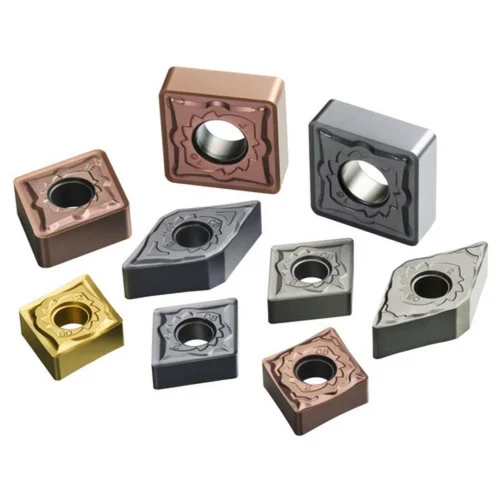
유형 카바이드 인서트 심
가공 작업의 다양한 요구 사항을 충족하기 위해 카바이드 인서트 심은 다양한 유형으로 제공됩니다. 다음은 카바이드 인서트 심의 다양한 유형을 보여주는 자세한 표입니다:
| 카바이드 인서트 심 유형 | 설명 | 일반 애플리케이션 |
|---|---|---|
| 플랫 심 | 기본 지원을 위한 심플하고 평평한 심 | 일반 가공 |
| 앵귤러 심 | 인서트에 각도 지원 제공 | 특수 절단 작업 |
| 곡선형 심 | 곡선 모서리가 있는 인서트용 디자인 | 복잡한 기하학적 구조 |
| 두꺼운 심 | 추가 지원 및 안정성 제공 | 고강도 가공 |
| 얇은 심 | 미세 조정 및 정밀도에 사용 | 고정밀 작업 |
| 맞춤형 심 | 특정 도구 및 인서트 조합에 맞게 맞춤 설정 | 전문 애플리케이션 |
카바이드 인서트 심의 응용 분야
카바이드 인서트 심은 다양한 가공 작업에서 활용되고 있습니다. 다음은 그 응용 분야를 보여주는 표입니다:
| 애플리케이션 | 설명 | 혜택 |
|---|---|---|
| 선회 | 인서트 지원을 위한 선삭 작업에 사용 | 정확도 및 마감 개선 |
| 밀링 | 밀링 커터에 인서트 지원 | 향상된 안정성 및 공구 수명 |
| 드릴링 | 더 나은 성능을 위해 드릴 비트에 사용 | 정밀도 향상 |
| 그루빙 | 정밀한 절단을 위한 그루브 인서트 지원 | 그루브 품질 향상 |
| 지루함 | 지루한 작업에서 안정성을 위한 필수 요소 | 일관된 보어 크기와 마감 |
카바이드 인서트 심의 재료 특성
카바이드 인서트 심의 재료 특성은 성능에 결정적인 영향을 미칩니다. 다음은 주요 속성을 자세히 설명하는 표입니다:
| 속성 | 설명 | 성능에 미치는 영향 |
|---|---|---|
| 경도 | 소재의 변형에 대한 저항력 측정 | 경도가 높을수록 내마모성이 향상됩니다. |
| 인성 | 에너지를 흡수하고 골절에 저항하는 능력 | 높은 스트레스 조건에서 내구성을 위한 필수 요소 |
| 밀도 | 재료의 단위 부피당 질량 | 심의 무게와 안정성에 영향을 미칩니다. |
| 열 전도성 | 열 전도 능력 | 높은 전도성으로 절단 시 열 발산에 도움 |
| 내식성 | 화학적 분해에 대한 내성 | 열악한 환경에서의 수명에 중요 |
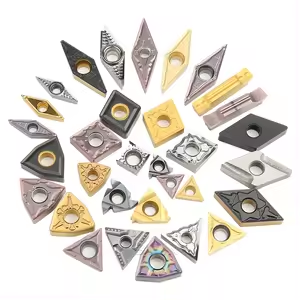
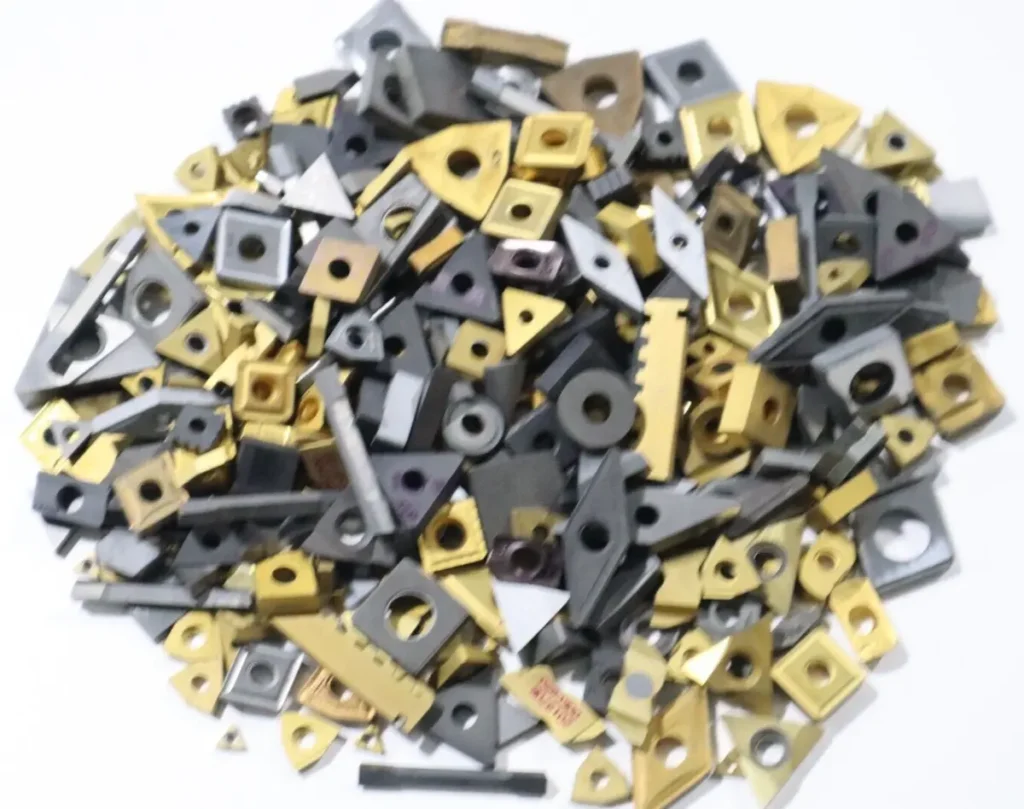

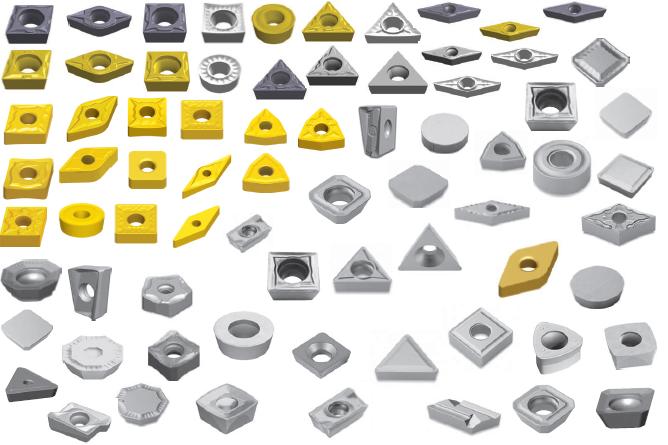
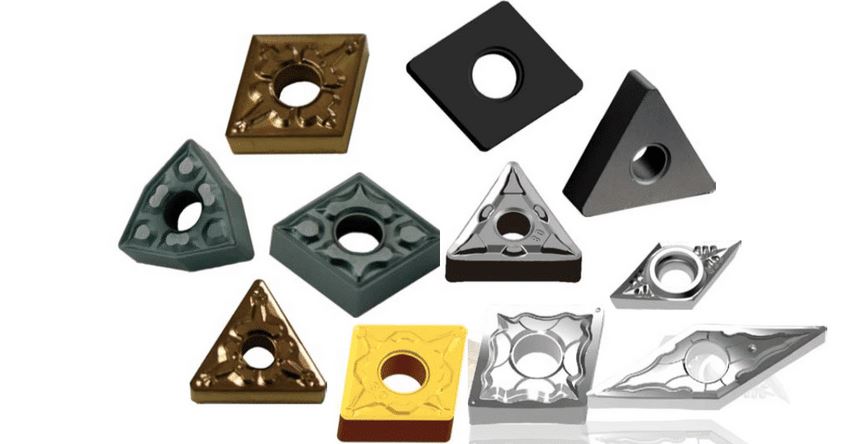
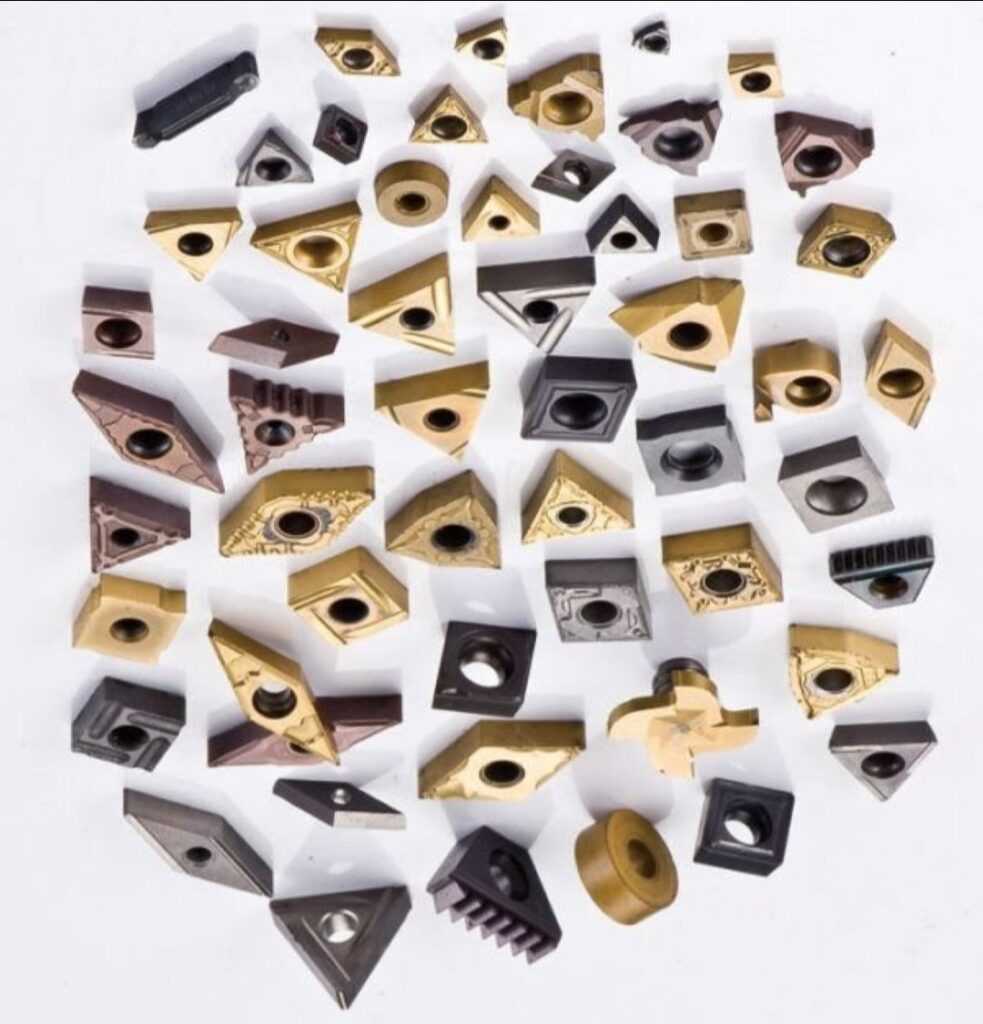
구성 및 특성
카바이드 인서트 심의 구성과 특성을 이해하면 용도에 맞는 심을 선택하는 데 도움이 됩니다. 자세한 표는 다음과 같습니다:
| 머티리얼 구성 | 속성 | 특성 |
|---|---|---|
| 텅스텐 카바이드 | 높은 경도 및 내마모성 | 고속 가공에 이상적 |
| 코발트 | 견고함과 구속력 제공 | 전반적인 강도 향상 |
| 티타늄 카바이드 | 높은 열 안정성 | 고온 애플리케이션에 적합 |
| 탄탈 탄화물 | 향상된 인성 | 취성 감소 |
| 니오븀 카바이드 | 내식성 | 부식성 환경에 적합 |
경도, 강도 및 내마모성
이 세 가지 파라미터는 카바이드 인서트 심의 성능을 평가하는 데 매우 중요합니다. 다음은 비교 표입니다:
| 매개변수 | 설명 | 영향력 |
|---|---|---|
| 경도 | 표면 함몰에 대한 내성 | 경도가 높을수록 내마모성이 향상됩니다. |
| 힘 | 가해지는 힘을 견디는 능력 | 강도가 높을수록 내구성 향상 |
| 내마모성 | 마찰로 인한 물질적 손실에 대한 저항력 | 공구 수명 연장을 위한 필수 요소 |
사양, 크기 및 모양
카바이드 인서트 심 는 다양한 요구 사항에 맞게 다양한 사양으로 제공됩니다. 자세한 표는 다음과 같습니다:
| 사양 | 크기 범위 | 모양 | 표준 |
|---|---|---|---|
| 두께 | 0.5mm ~ 5mm | 평면, 각진, 곡선 | ISO, ANSI, DIN |
| 너비 | 10mm ~ 50mm | 직사각형, 원형 | ISO, ANSI, DIN |
| 길이 | 20mm ~ 100mm | 다양한 | ISO, ANSI, DIN |
공급업체 및 가격 세부 정보
어디서 구매하고 얼마를 지불해야 하는지 아는 것은 매우 중요합니다. 다음은 공급업체와 가격 세부 정보가 나와 있는 표입니다:
| 공급업체 | 가격 범위 | 댓글 |
|---|---|---|
| 공급업체 A | 개당 $5 - $15 | 다양한 표준 크기 |
| 공급업체 B | 개당 $10 - $20 | 맞춤형 심 사용 가능 |
| 공급업체 C | 개당 $8 - $18 | 대량 할인 제공 |
| 공급업체 D | 개당 $7 - $17 | 고품질 소재 |
| 공급업체 E | 개당 $9 - $19 | 빠른 배송 옵션 |
올바른 초경 인서트 심을 선택하는 방법
올바른 카바이드 인서트 심을 선택하는 것은 어려울 수 있습니다. 다음은 선택 과정을 안내하는 표입니다:
| 기준 | 고려 사항 | 권장 사항 |
|---|---|---|
| 재질 | 가공 중인 재료 유형 | 더 단단한 소재를 위한 더 단단한 심 |
| 애플리케이션 | 특정 가공 작업 | 복잡한 작업을 위한 특수 심 |
| 크기 및 모양 | 공구 홀더 및 인서트의 치수 | 비표준 크기를 위한 맞춤형 심 |
| 예산 | 비용 제약 조건 | 품질과 비용 간의 균형 |
| 공급업체 | 안정성 및 가용성 | 좋은 평가를 받은 평판 좋은 공급업체 |
장점과 한계 비교
다양한 카바이드 인서트 심의 장단점을 이해하면 정보에 입각한 결정을 내리는 데 도움이 됩니다. 다음은 비교 표입니다:
| 유형 | 장점 | 제한 사항 |
|---|---|---|
| 플랫 심 | 간단하고 쉬운 사용 | 복잡한 모양에 대한 제한적 지원 |
| 앵귤러 심 | 각진 인서트에 대한 더 나은 지원 | 제조가 더 복잡해짐 |
| 곡선형 심 | 곡선 모서리가 있는 인서트에 이상적 | 더 높은 비용 |
| 두꺼운 심 | 향상된 안정성 | 체중 증가 |
| 얇은 심 | 높은 정밀도 | 내구성 저하 |

자주 묻는 질문
다음은 몇 가지 일반적인 질문입니다. 카바이드 인서트 심명확성을 위해 표 형식으로 답변했습니다:
| 질문 | 답변 |
|---|---|
| 카바이드 인서트 심이란 무엇인가요? | 절삭 공구의 카바이드 인서트를 지지하고 고정하는 데 사용되는 부품입니다. |
| 왜 중요한가요? | 안정성과 정밀성을 제공하고 공구 수명을 연장합니다. |
| 어떤 재료로 만들어지나요? | 일반적으로 텅스텐 카바이드, 코발트, 티타늄 카바이드, 탄탈 탄화물 및 니오븀 카바이드가 사용됩니다. |
| 올바른 심은 어떻게 선택하나요? | 재료, 용도, 크기, 모양, 예산 및 공급업체를 고려하세요. |
| 맞춤 심을 받을 수 있나요? | 예, 많은 공급업체에서 특정 요구 사항에 맞는 맞춤형 심을 제공합니다. |
| 심의 일반적인 유형은 무엇인가요? | 평면, 각진, 곡선, 두꺼운, 얇은, 맞춤형 쉼. |
| 카바이드 인서트 심은 어디에서 구입할 수 있나요? | 공급업체 A, B, C, D, E 등 다양한 공급업체가 제공합니다. |
| 비용은 얼마인가요? | 가격은 유형과 공급업체에 따라 개당 $5에서 $20까지 다양합니다. |
| 찾아야 할 주요 속성은 무엇인가요? | 경도, 인성, 밀도, 열전도율, 내식성을 측정합니다. |
| 카바이드 인서트 심을 사용하는 애플리케이션은 무엇입니까? | 선삭, 밀링, 드릴링, 홈 가공, 보링 작업. |
결론
카바이드 인서트 심은 가공 분야에서 없어서는 안 될 필수품으로, 카바이드 인서트에 필요한 지지력과 안정성을 제공합니다. 유형, 용도, 재료 특성 및 올바른 심을 선택하는 방법을 이해하면 가공 작업을 크게 향상시킬 수 있습니다. 표준 심이든 맞춤형 솔루션이든 이 가이드는 정보에 입각한 결정을 내리는 데 필요한 모든 정보를 제공합니다.




